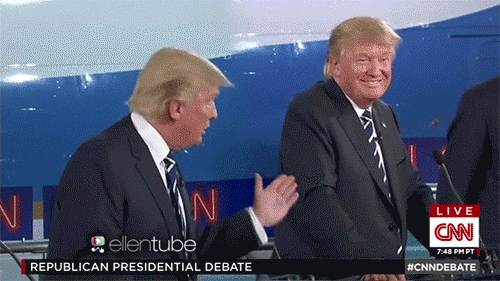WASHINGTON (AP) — President Donald Trump received positive economic news this past week and twisted it out of proportion. That impulse ran through days of rhetoric as he hailed the success of a veterans program that hasn’t started and saw progress with North Korea that isn’t evident to his top diplomat.
A week in review:
ECONOMY AND TRADE
TRUMP: “We’ve accomplished an economic turnaround of historic proportions.” — remarks Friday on a new economic report.
THE FACTS: That doesn’t square with the record. Trump didn’t inherit a fixer-upper economy.
The U.S. economy just entered its 10th year of growth, a recovery that began under President Barack Obama, who inherited the Great Recession. The data show that the falling unemployment rate and gains in home values reflect the duration of the recovery, rather than any major changes made since 2017 by the Trump administration.
While Trump praised the 4.1 percent annual growth rate in the second quarter, it exceeded that level four times during the Obama presidency. But quarterly figures are volatile and strength in one quarter can be reversed in the next. While Obama never achieved the 3 percent annual growth that Trump hopes to see, he came close. The economy grew 2.9 percent in 2015.
The economy faces two significant structural drags that could keep growth closer to 2 percent than 3 percent: an aging population, which means fewer people are working and more are retired, and weak productivity growth, which means that those who are working aren’t increasing their output as quickly as in the past.
Both of those factors are largely beyond Trump’s control.
TRUMP: “One of the biggest wins in the report, and it is, indeed a big one, is that the trade deficit — very dear to my heart because we’ve been ripped off by the world — has dropped.” — remarks Friday.
THE FACTS: Trump is correct that a lower trade deficit helped growth in the April-June quarter, but it’s not necessarily for a positive reason.
The president has floated plans to impose import taxes on hundreds of billions of dollars of foreign goods, which has led to the risk of retaliatory tariffs by foreign companies on U.S. goods.
This threat of an escalating trade war has led many companies to increase their levels of trade before any tariffs hit, causing the temporary boost in exports being celebrated by Trump.
Richard Moody, chief economist at Regions Financial, said the result is that the gains from trade in the second quarter will not be repeated.
TRUMP: “We’re having the best economy we’ve ever had in the history of our country.” — remarks Thursday in Granite City, Illinois.
THE FACTS: This is not the best the U.S. economy has ever been.
The unemployment rate is near a 40-year low and growth is solid, but by many measures the current economy trails other periods in U.S. history. Average hourly pay, before adjusting for inflation, is rising at about a 2.5 percent annual rate, below the 4 percent level reached in the late 1990s when the unemployment rate was as low as it is now.
Pay was growing even faster in the late 1960s, when the jobless rate remained below 4 percent for nearly four years. And economic growth topped 4 percent for three full years from 1998 through 2000, an annual rate it hasn’t touched since.
TRUMP: “The Canadians, you have a totally closed market ... they have a 375 percent tax on dairy products, other than that it’s wonderful to deal. And we have a very big deficit with Canada, a trade deficit.” — remarks Thursday in Peosta, Iowa.
THE FACTS: No, it’s not closed. Because of the North American Free Trade Agreement, Canada’s market is almost totally open to the United States. Each country has a few products that are still largely protected, such as dairy in Canada and sugar in the United States.
Trump also repeated his claim that the U.S. has a trade deficit with Canada, but that is true only in goods. When services are included, such as insurance, tourism, and engineering, the U.S. had a $2.8 billion surplus with Canada last year.

